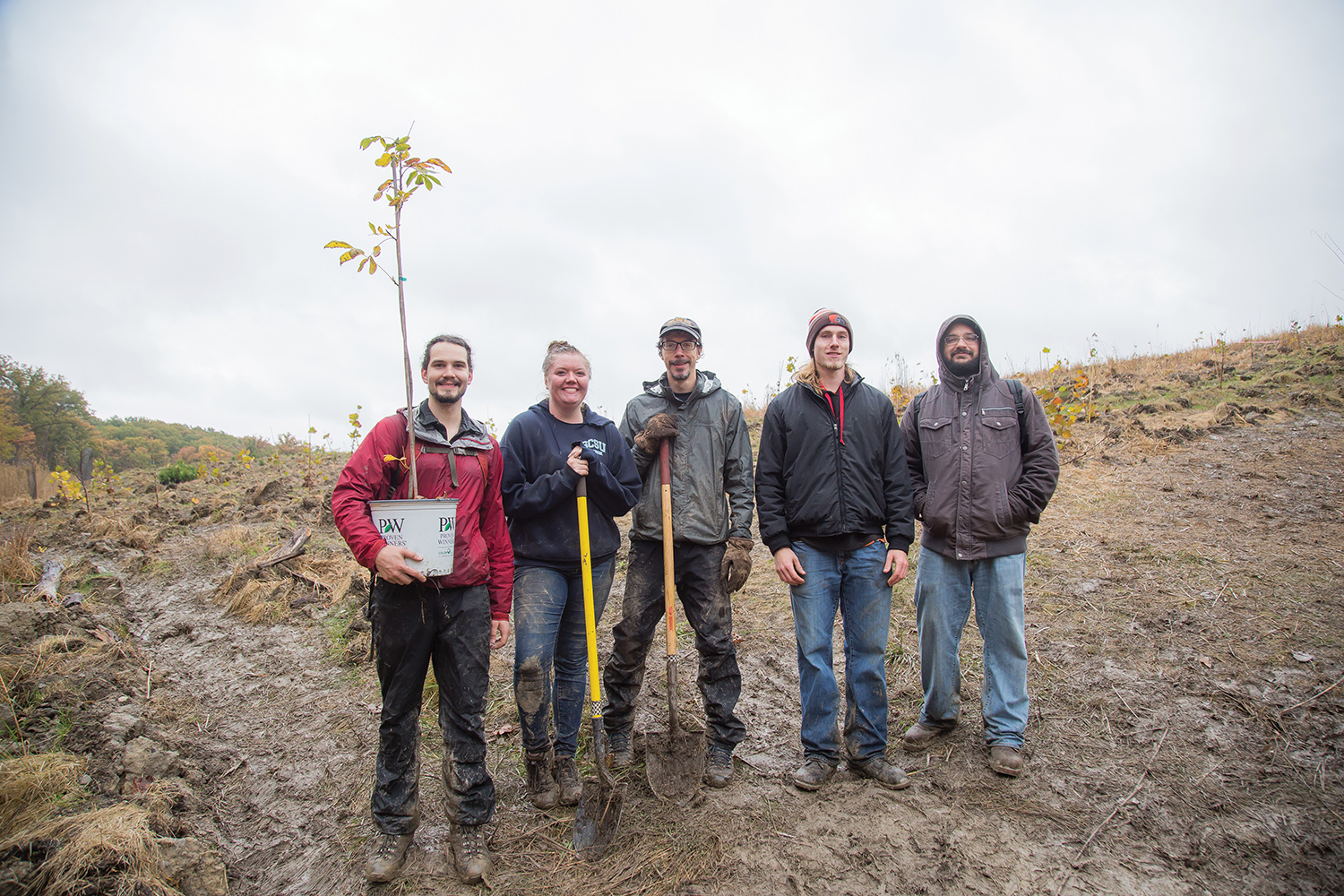On a cold, rainy Saturday at the end of September, a group of volunteers and researchers trudge up a steep, muddy hill in the Cuyahoga Valley National Park (CVNP). They’ve come out to celebrate and, despite the conditions, they’re having fun planting over 480 native trees on a site near the Brandywine Ski Resort.
, PhD, a professor of biological sciences at ¬È∂π¥´√Ω, along with graduate students in the department, partnered with the national park to coordinate the volunteers who are assisting them in an effort to restore a native forest in land formerly used as a gravel and top soil mine. The tree planting is the beginning of a long-term research project launched by KSU and CVNP to restore similar sites throughout the park.
“Everyone left with a great feeling of accomplishment,” says Dr. Blackwood afterwards. “It was a wonderful day!”
Mining that began in the 1980s compacted the soil in this area significantly, creating dense, heavy clay conditions that impair tree and brush growth. Prior to the planting crew’s arrival, the park brought in machinery to dig trenches for planting, giving the soil an initial break-up, with the hopes that the trees’ roots will take hold and restore the soil naturally.
“That’s the goal—to see if the plants can handle the problem without doing any sort of further remediation,” says graduate student Tom Ruggles, BS ’17, who had worked with Dr. Blackwood as an undergrad and decided to complete his master’s degree in ecology at Kent State specifically to be involved in this project.
The effects of the techniques used here will help determine the best tree species to use in other restoration efforts, says Dr. Blackwood. “A lot of tree species could be planted at these types of sites, so we’d like to know which ones will respond best under these conditions. We think the various trees might survive differently, depending on what family they're from or their type of root system.
“Over the long-term, we will also look at how the different types of trees impact the site in many ways, including soil organic matter, nutrient runoff and habitat for other organisms.
In the weeks following this planting day, more than 2,000 trees were planted at several former mine sites throughout the . It will be at least 10 years until the saplings are tall enough to produce shade to keep weeds at bay, so the areas will have to be under active management by the national park, and monitored by researchers from Kent State, for quite some time.
Researchers are hopeful that, with time, these sites can be restored to pre-mining conditions and help ecologists discover better practices for future restoration projects.
—Melissa Olson
Back to Flash Forward Winter 2018
